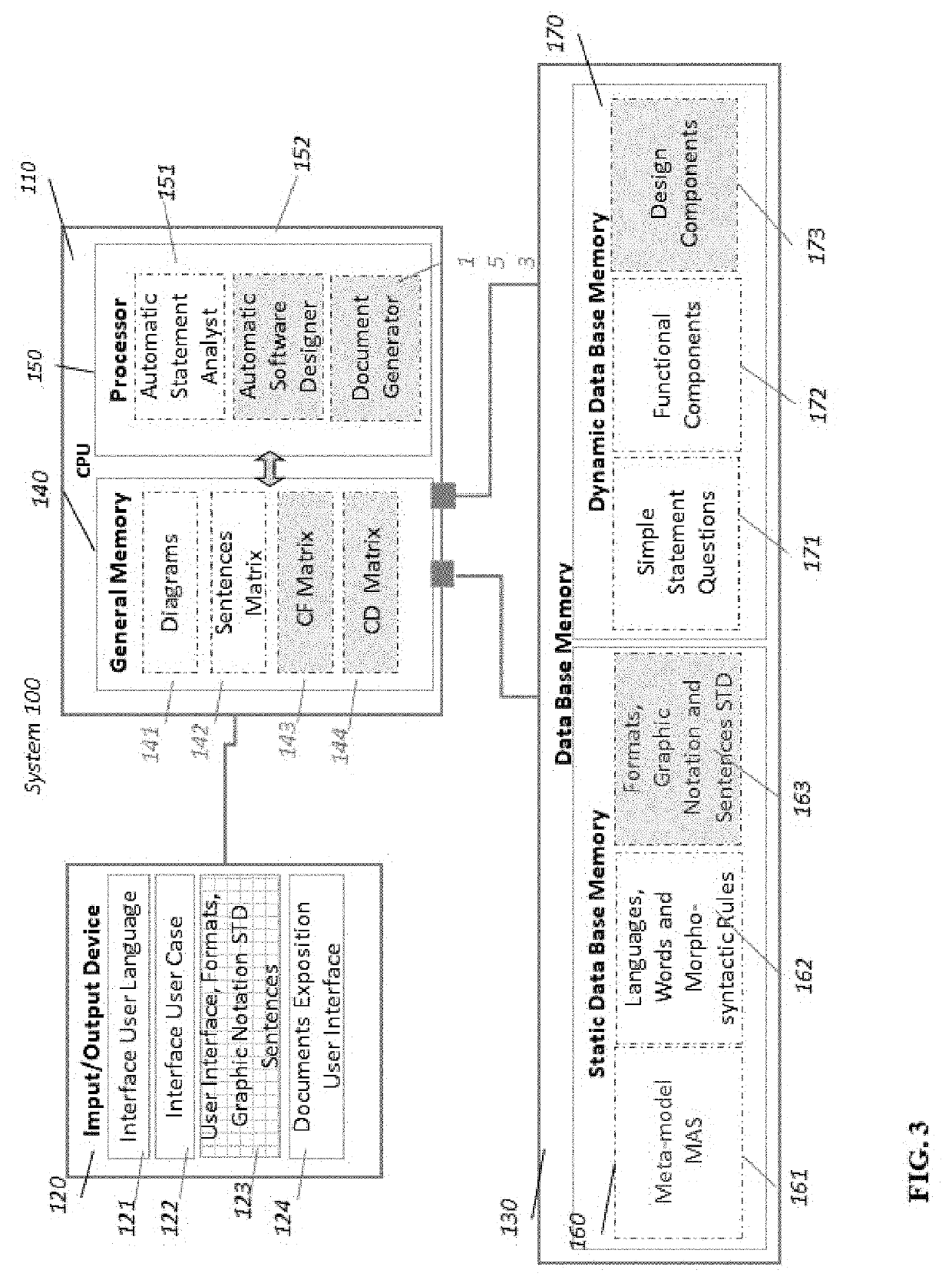Process and system for automatic generation of functional architecture documents and software design and analysis specification documents from natural language
- Summary
- Abstract
- Description
- Claims
- Application Information
AI Technical Summary
Benefits of technology
Problems solved by technology
Method used
Image
Examples
case user interface 122
[0598]Case User Interface 122
[0599]The Case User Interface allows the user to enter the requested data and perform actions to save them in the database memory.
[0600]In order for the tool to function, the user must enter data in natural language (layers, resources, processes, subprocesses, moments, steps) as established by the method.
[0601]To that end, it presents this upload interface that allows the user to enter these fields and create relationships between them using the order established in the method, wherein each of the components (dimensions, temporal activities and simple sentences) require the following data fields to be uploaded:[0602]Name[0603]Description[0604]Related dependent elements
[0605]These data fields are displayed in the interface. Dimensions and Temporal Activities Upload Interface, in which the {text1} and {text2} are replaced by the name of the corresponding component, as the user fills in the data fields in the established sequence:[0606]First, {text1}=“Layer...
PUM
 Login to View More
Login to View More Abstract
Description
Claims
Application Information
 Login to View More
Login to View More - R&D
- Intellectual Property
- Life Sciences
- Materials
- Tech Scout
- Unparalleled Data Quality
- Higher Quality Content
- 60% Fewer Hallucinations
Browse by: Latest US Patents, China's latest patents, Technical Efficacy Thesaurus, Application Domain, Technology Topic, Popular Technical Reports.
© 2025 PatSnap. All rights reserved.Legal|Privacy policy|Modern Slavery Act Transparency Statement|Sitemap|About US| Contact US: help@patsnap.com



